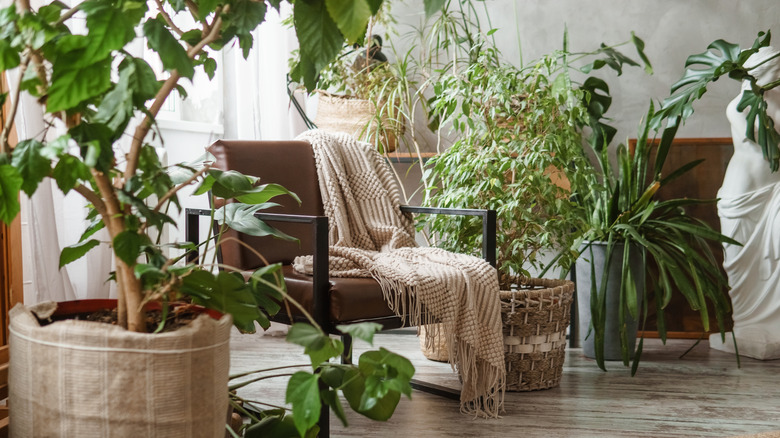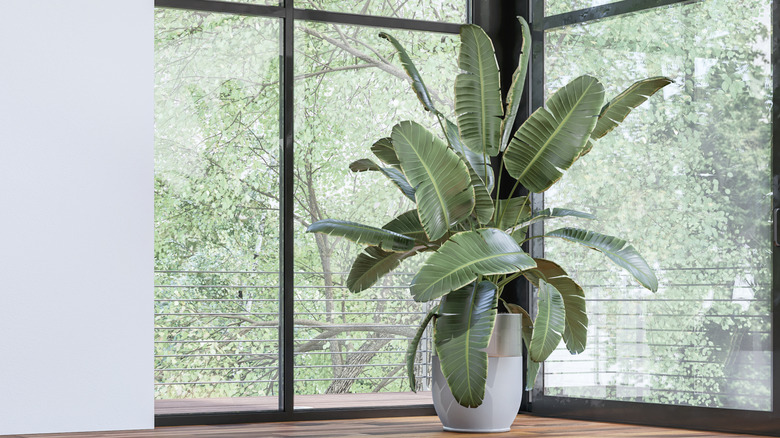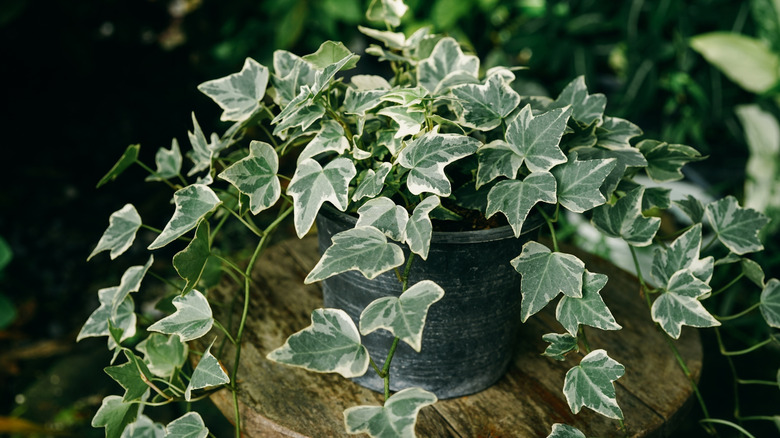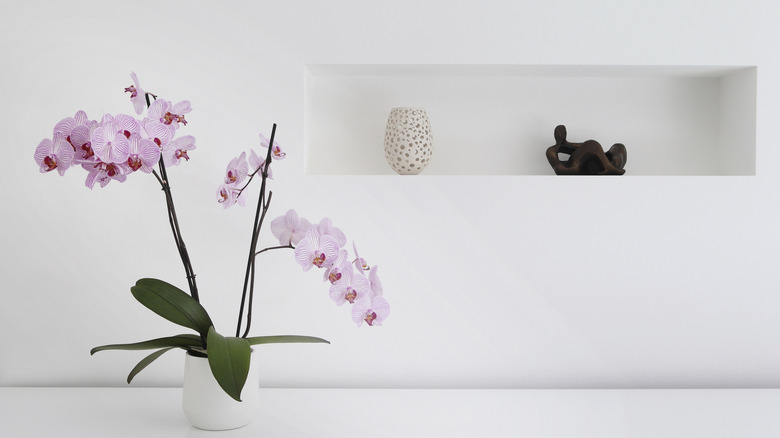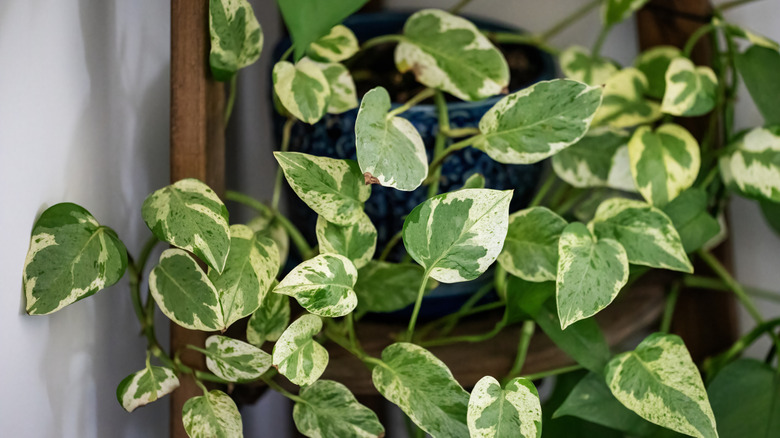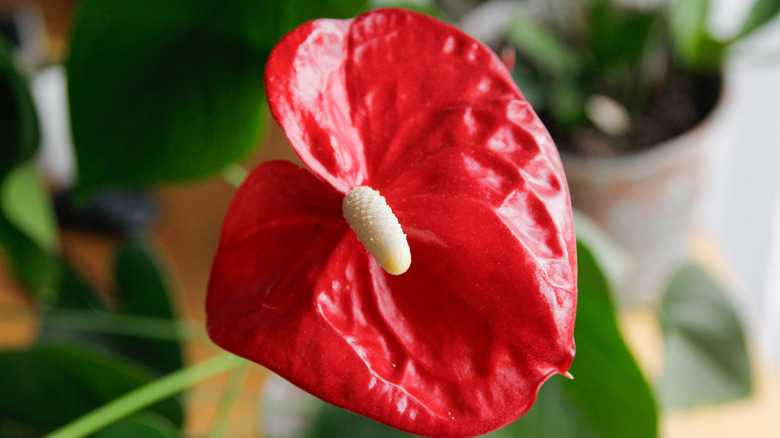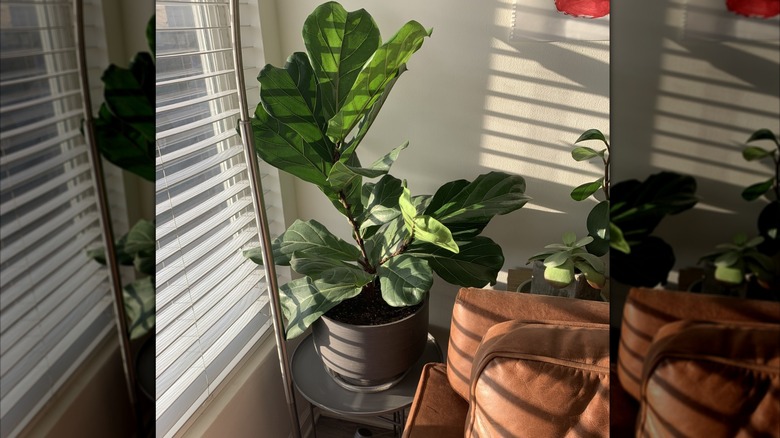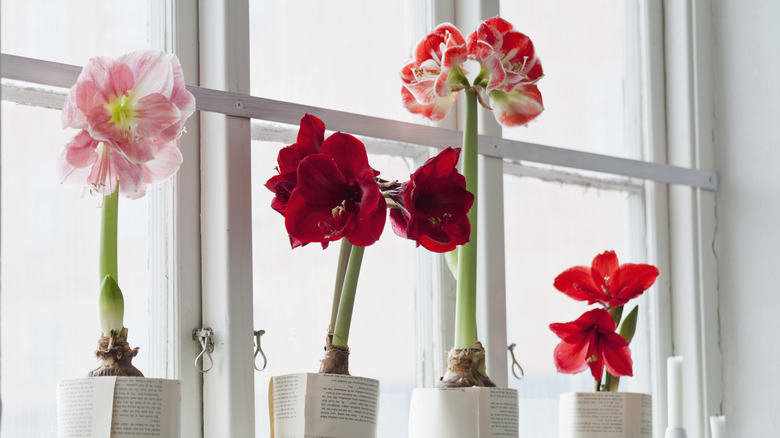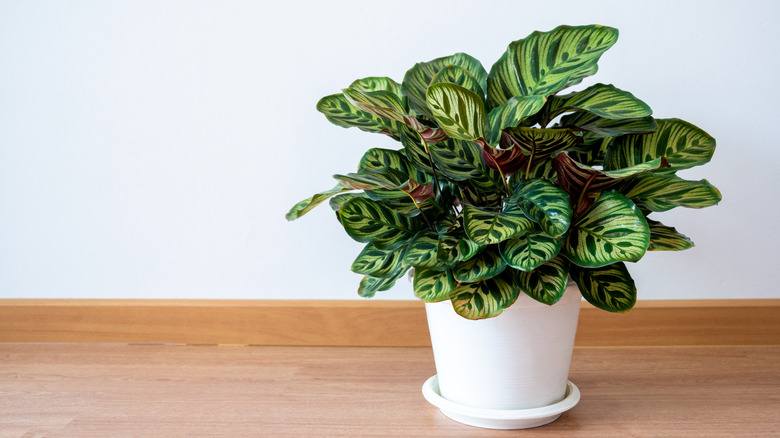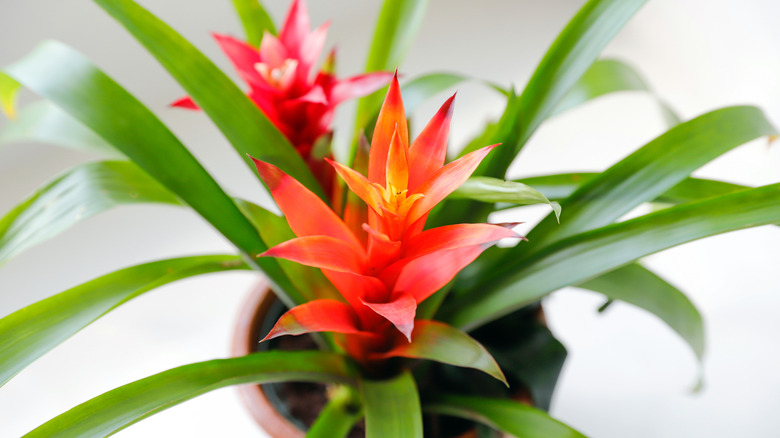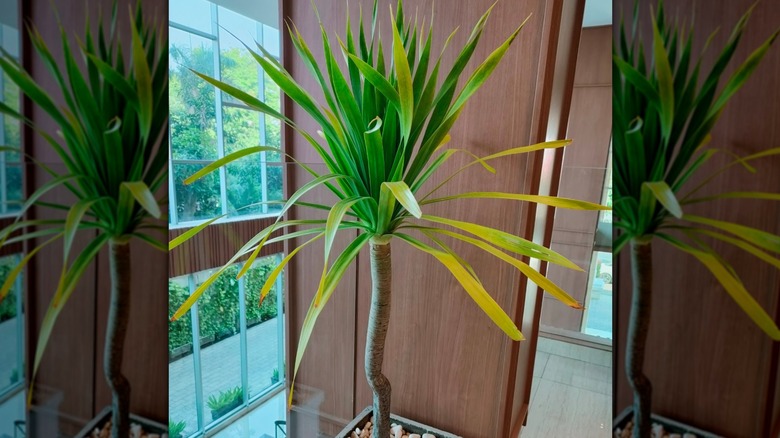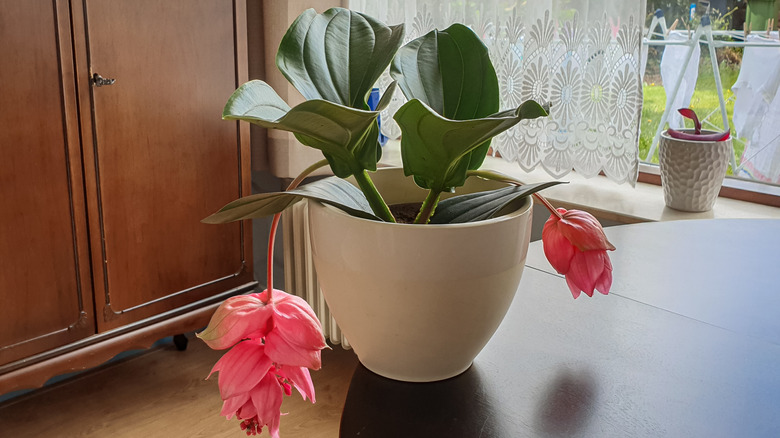The 11 Most Dramatic Plants For Your Maximalist Home
Maximalism in design is all about layering: textures, colors, styles and anything else. For the true biophilic, the idea of creating a maximalist space bursting with plants might just be the stuff of dreams. To make the vision a reality and pull it off in an intentional way, the same basic principles can be applied with one specific addition: height.
Amalgamate hanging plants with tall, potted versions. Combine bushy plants with some long-stemmed, single flower species. Create dimension by arranging several different plants in a single, large pot or raising some of your pots up with a plant stand or a stack of books. Of course, the arrangement of the plants is just one element of a plant-lover's maximalist look. Choosing a wide variety of unique, diverse, and interesting plants will be the key to making your space feel like a vibrant jungle garden inside your home.
When selecting your plants, look for intense, vivid colors, as well as interesting leaf shapes and textures. Go for a mix of growing patterns, interspersing bushy, vining, and erect. Consider whether your space can provide the light and temperature that suits your choices, then create a backdrop. Vining plants like ivy or pothos can be trained to grow up your wall. You could even use plant hangers in the corners of your room to allow trailing plants to cascade while creating a wall of yucca trees by lining them up in pots.
Bird of paradise
There are a few plants for whom the name alone suggests the wild, vibrant, jungle vibe they bring and the bird of paradise is one of them. This plant features large leaves and if it blooms, you'll be rewarded with spiky orange purple flowers at the end of a long, straight stem — like a bird taking flight. It will need a loamy, slightly acidic soil and a good amount of sun to thrive in your space, but if you can give it what it needs, it will be a stunning part of your indoor garden design.
Variegated ivy
Create a backdrop or frame of sorts for your maximalist jungle with a vining plant. Variegated ivy is one of the many indoor plants that will thrive in a small space. It grows quickly in a variety of light conditions and you can train it to grow up a wall with a trellis. Or, let it cascade down from a plant hanger. Set it on a high shelf and let some of its vining stems run out along the shelf above your space while others drape down the wall.
Orchids
With several delicate blooms on the end of a long, smooth stem, orchids have almost an innate sense of delicacy and romance. They do require a little more maintenance, however. They'll need a special nitrogen, phosphorous, and potassium fertilizer, and orchid potting soil, in addition to a good amount of sun. An orchid's needs change seasonally, so you may want to consult an expert to properly care for your plant. However, in general they are easy to care for and offer a sweet, luminescent look to your indoor jungle.
Pothos
If you're thrilled about the idea of creating a maximalist design with your indoor garden but don't exactly have a green thumb, the pothos plant might just be the perfect place to start. This vining wonder is super hardy and can be trained to climb or drape, so it is wonderfully adaptable to your design vision. What's more, this green houseplant is perfect for growing indoors because it doesn't require much sun and grows quickly, so it will help to fill out your indoor garden in a flash.
Flamingo flower
This South American beauty is not only a bold addition to your green space, with its bright waxy flower, it can be one of the main stars. Not only because often the flower is red, and almost ideally complements the greenery inherent in an in-home garden, but also because when it's well cared for, the plant will bloom several times in a year. Their water preferences are a little fastidious (high humidity and moisture, but not soggy) and they do like lots of indirect sunlight. But for that flower display, the extra care is worth it.
Fiddle leaf fig
With its deep green color, waxy texture, and interesting leaf shape, fiddle leaf figs check all the boxes for maximalist indoor gardeners, although they are a little on the finicky side when it comes to their care. You'll want to give your fig some bright, indirect light and be sure to adjust the position every so often so the plant doesn't lean too heavily toward the light source. It's unlikely you'll see a flower on this plant, but because they can grow up to ten feet it would make a great addition to add some height to your home garden.
Amaryllis
The elegant, trumpet shaped flower of an amaryllis is actually born from the mature flower stalk of a bulb. And as such, they'll be planted with a portion of the bulb exposed above the soil. These beauties are, perhaps, among the divas of the floral world: they like to have a little sun bath in the morning, and indirect light for the rest of the day. It's also advisable to turn them on a regular basis so the flower stalk grows straight up to fully radiate their fabulousness.
Calathea
Among the evergreen plants that you'll likely want to incorporate in your personal jungle, the calathea will definitely stand out. While the tops of its leaves present beautiful and myriad shades of green, the undersides can be almost purple. That two-tone quality is an ideal addition to a green, maximalist home garden. Though it's worth noting that these jewels of your jungle do, in fact, come from the jungle, and therefore need lots of water, warmth, and humidity in order to thrive.
Bromeliads
If texture is central to maximalism in design, the Bromeliad is another unique looking houseplant that could be a statement piece in your home. Although they look like a flower, the colorful center leaves resemble a star shape, giving these guys loads of texture. What's more, their bright centers come in a wide variety of colors, making them an obvious choice to add some visual interest to all that green. Their light needs will depend on the species, but they will all want warm temperatures and some good humidity.
Yucca
Speaking of texture, with its spiky leaves and wide variety of shapes and colors, the yucca plant is another easy choice when curating your personal indoor forest. They are quite hardy, and can tolerate dry and cooler environments. Though they are sensitive to overwatering — for a yucca plant, it's better to be dry than too wet. Some varieties will grow as like a small tree, so they can add height and dimension to your green design.
Rose grape
One look at the rose grape plant and it's easy to see where it gets its name. The delicate pink flowers look much like a bunch of grapes on a vine. The berries that burst forth on the plant after flowering aren't edible, but they do lend to the rose grape's tropical vibe. They are, in fact, a tropical plant and will require a fairly constant state of moisture in addition to indirect sunlight. It's also well advised to use a peat-based potting mix versus standard potting soil for best results.
